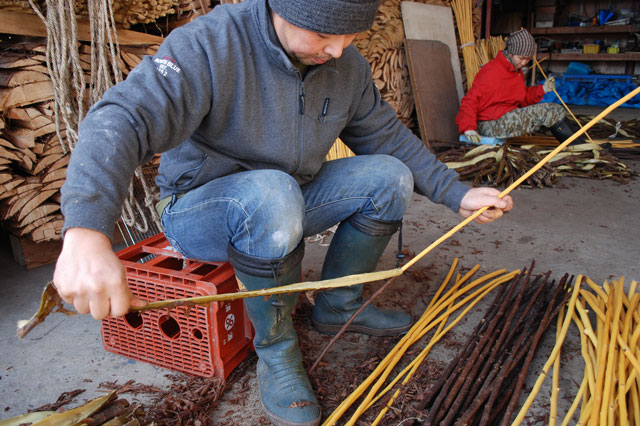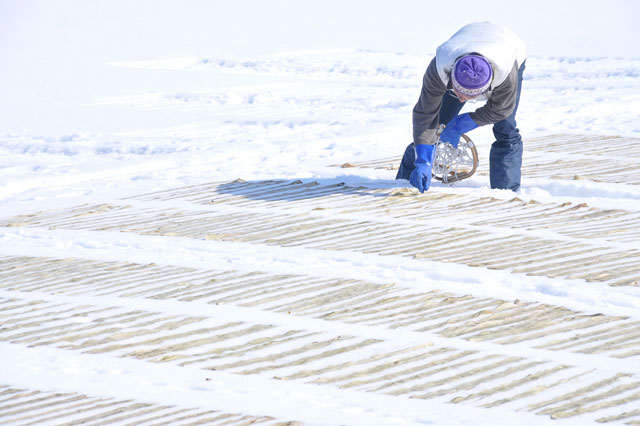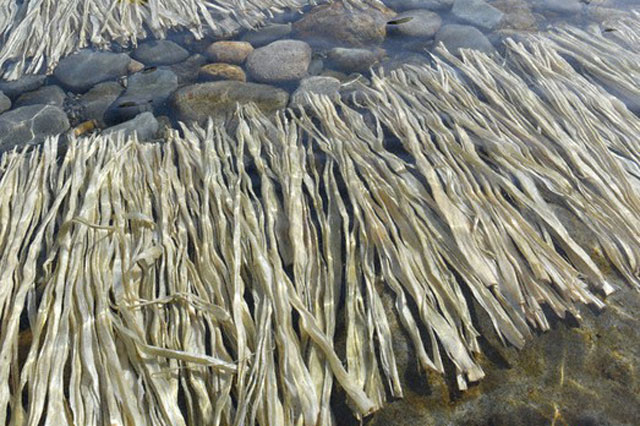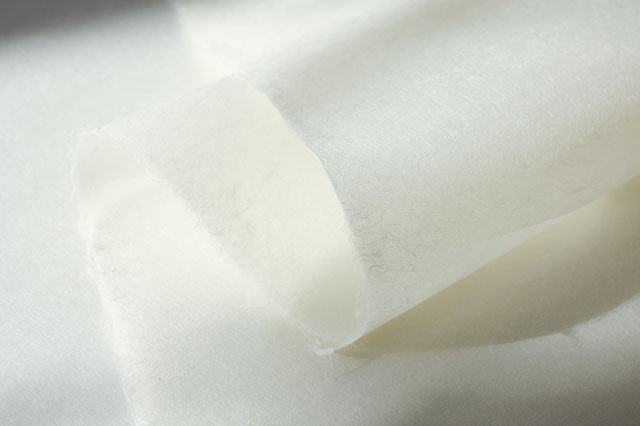Fibre bleaching: Chemical vs Natural
2023 Jun 9th
When you look at a clean, evenly white sheet of paper, do you ever wonder how it gets that way? Have you noticed that the best washi isn’t really white?
We know that the basic process of harvesting and preparing the fibre, let’s focus on kozo, has been unchanged for centuries. After harvesting, the kozo branches are cut to a uniform length and steamed to loosen the outer bark layers from the wood. The bark is composed of three layers; a brown outer bark and two layers of inner bark, one green, and one creamy. It is the two inner layers that are used to make washi. Sometimes papermakers include the green layer, more often they scrape it away depending on the desired end result.

Removing outer bark layers of kozo
During the next steps, as the fibre is prepared for papermaking, there are diverging approaches in the choice of formation and lightening agents. When preparing fibres using natural methods – soda ash, water, sun and snow bleaching – the process is slow and gentle. The fibre retains its inherent suppleness and strength; the qualities we consider inherent to Japanese paper. These methods have negligible impact on the environment and the resulting paper has an almost indefinite lifespan.

Snow bleaching

River water bleaching
To create a very white paper requires harsh chemical bleaches such as chlorine, alkaline hydrogen peroxide, and sodium hydrosulfite. The use of these products creates the bright white sheet that many people crave, but the cost to the environment is high and the effect on the fibres used is damaging. Whitening the kozo fibre in this way causes it to become brittle and can increase the acidity of the resulting paper.

When you look at a clean, evenly white sheet of paper now, what will you think? Maybe the subtle warm tones of handmade washi will look a little more appealing. If sustainability is part of your studio practice, and, if the longevity of your work is important to you, traditionally made Japanese papers, Heritage Washi, should be your first choice of paper. For suggestions that work with your favourite media, contact your representative.

